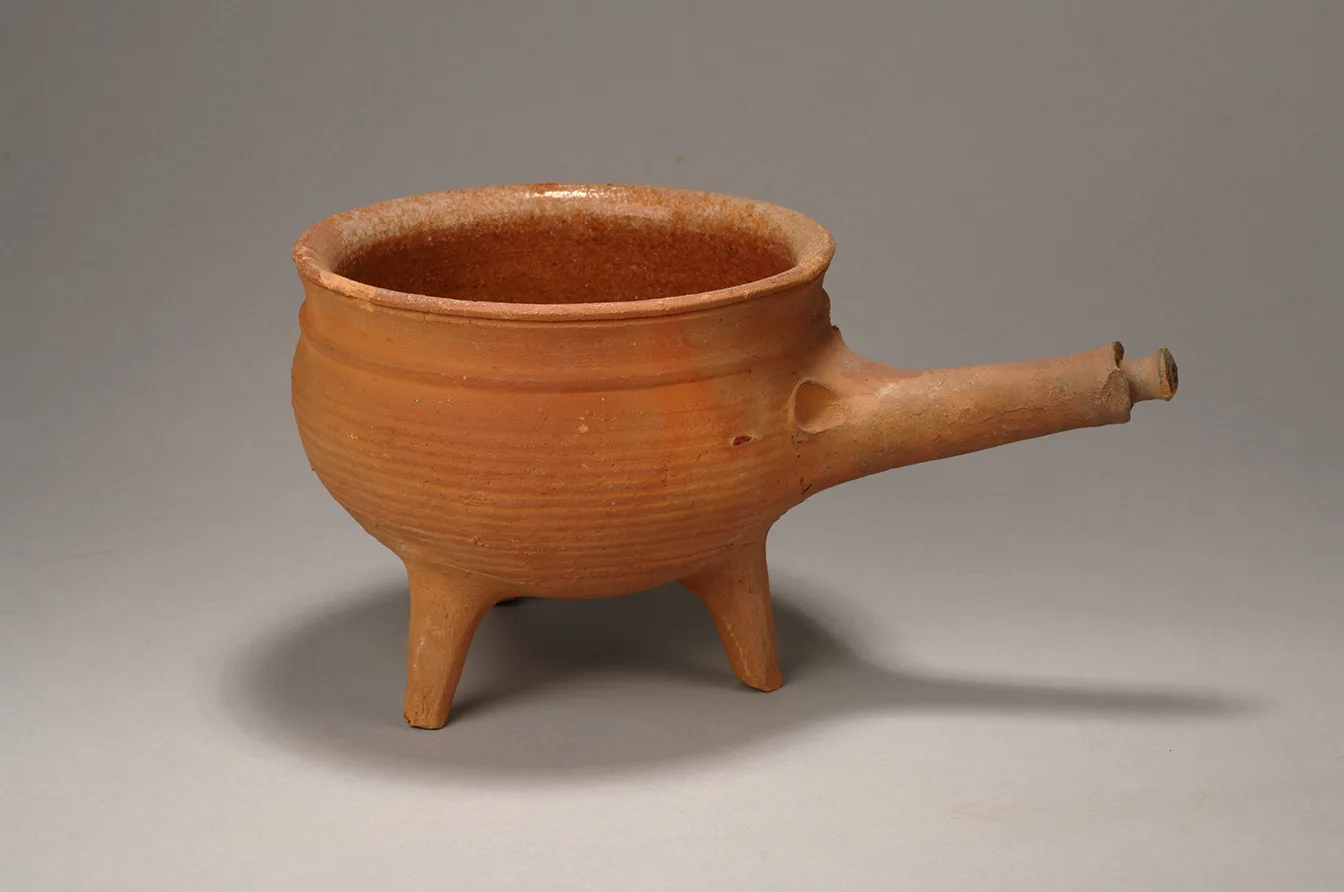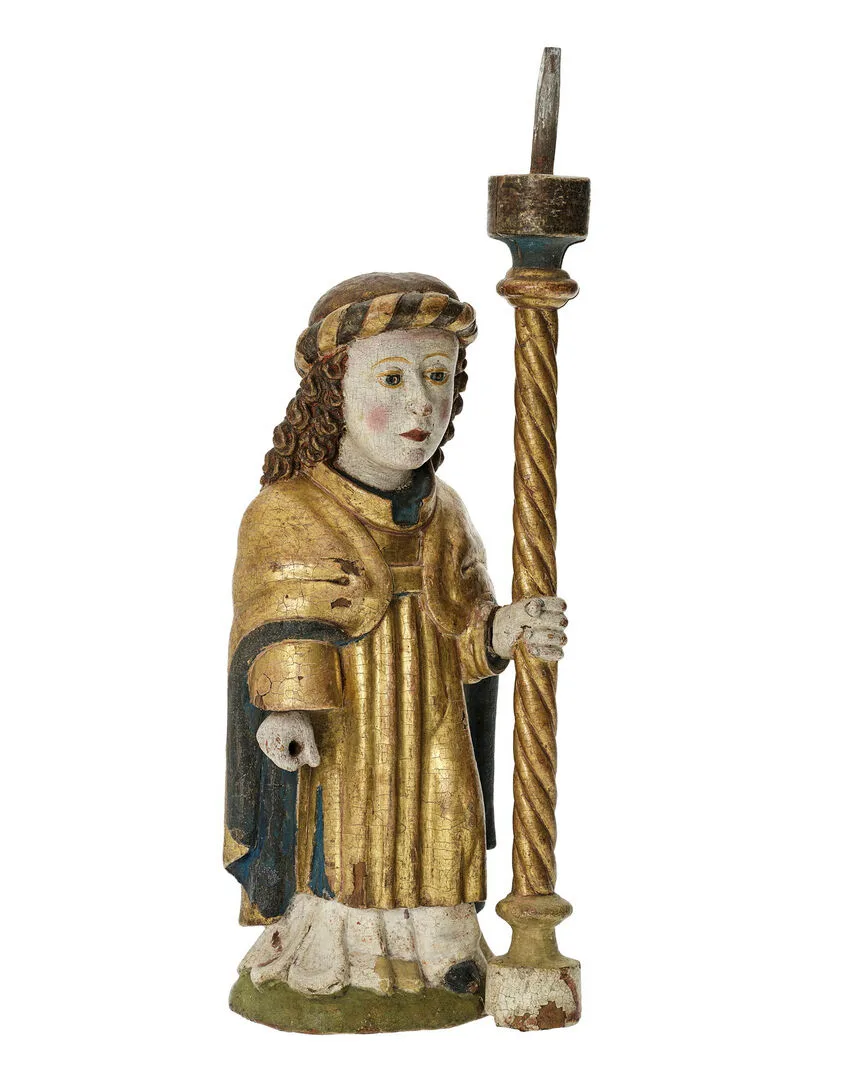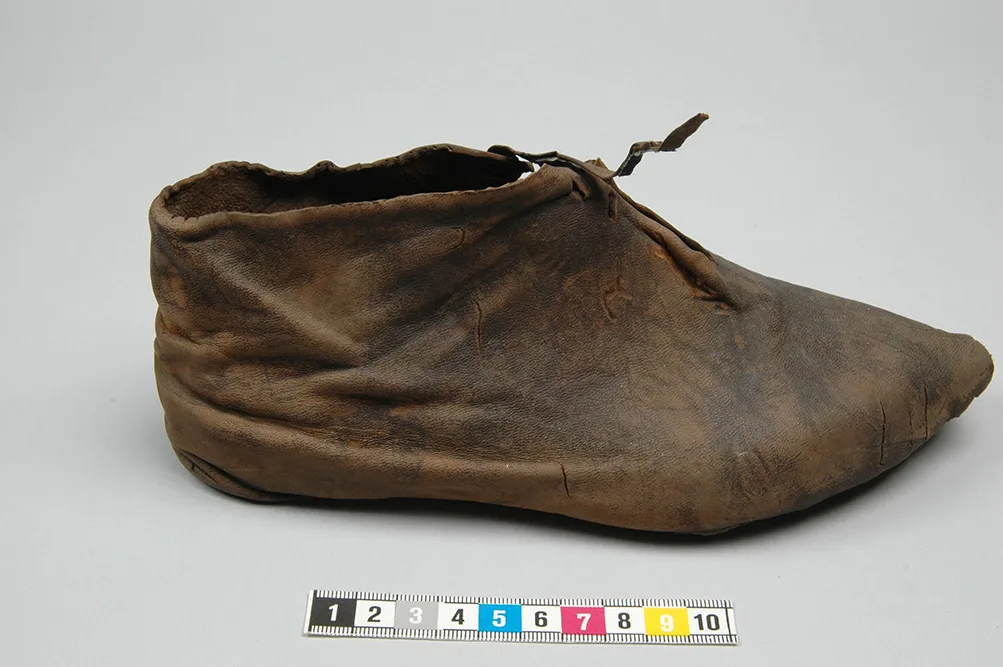Churches in the Middle Ages
Viking Age
AD 800 – AD 1100
Middle Ages
AD 1050 – AD 1520
Modern Age
AD 1520 – AD 2025
Church, social classes, and power
Medieval society had clear social classes. Clergy belonged to the spiritual nobility and were mainly loyal to the Pope, while also owing duties to the king, such as paying taxes and fines. Bishops could even demand fines from peasants living on church land.
Throughout the Middle Ages, there were ongoing struggles between the spiritual and secular nobility. The papacy insisted that the church should be immune from royal and noble interference, while the nobility competed with the church over land and privileges.



Left: Fresco of a bishop from the mid-12th century, Finja Church in Skåne. ID 9003030. Photo: Lennart Karlsson. Right: Wooden sculpture of a bishop from Hjortsberga Church, Blekinge. Photo: Helena Bonnevier. All from The Swedish History Museum/SHM (CC-BY 4.0).
Religion and rituals
The church included everyone, rich and poor, peasants and bishops alike. Christianity taught that all were equal before the Last Judgment.
Missionary efforts to the Nordic countries began as early as the 800s, with figures like Ansgar working to convert the pagan population. Full Christianization took centuries and was closely linked to the emergence of centralized power. Latin became an important international language, used not only by priests but also by kings and their envoys.
Church architecture
Around 2,350 churches were built in Sweden during the Middle Ages; today, roughly 1,380 remain, some in original form, others altered or in ruins. Most parishes had one church, often built by a wealthy landowner to secure both social status and a place in heaven, though sometimes the initiative came from the community. Once a bishop consecrated a church and its cemetery, the parish could use it. Parish priests were given a house and land to support themselves and were responsible for maintaining these properties.
Exterior and materials
Wood and stone were common building materials. Wooden churches were either stave churches or timbered, with only Hedared stave church preserved today. Knowledge of stone construction came from continental Europe and England, allowing facades to be decorated with figures and ornaments. Portals, such as the tympanum from Köping Church on Öland, were particularly ornate.
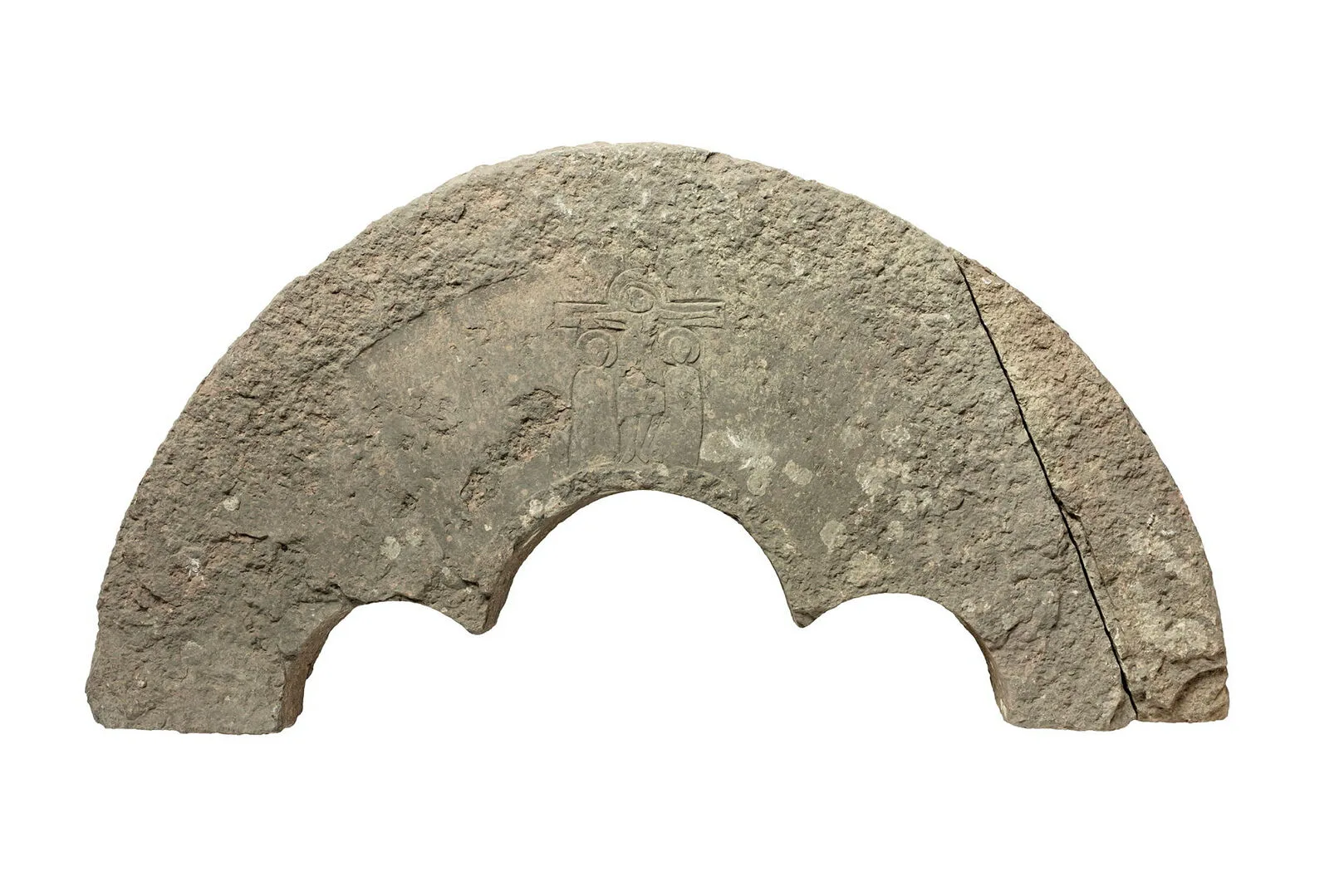
Tympanum
From Köpings church, Öland.
Interior layout
Even though medieval churches were not identical, they generally followed the same layout. Every church had a choir and a nave. The choir was located at the eastern end of the church and was either straight or ended in a rounded apse. The altar stood in the choir, where the priest conducted services and Mass. The congregation was not allowed into the choir, which was separated from the nave by a screen called a korskrank. The opening between the choir and the nave, called the triumphal arch, held a crucifix.

Triumphal crucifix
From Skönberga, Östergötland.
On view at Historiska museet in the exhibition Medeltida konst
The congregation gathered in the nave. Benches lined the walls for those who needed to sit during the service, while others stood. During the Middle Ages, the congregation was segregated by gender: women stood on the north side, men on the south.
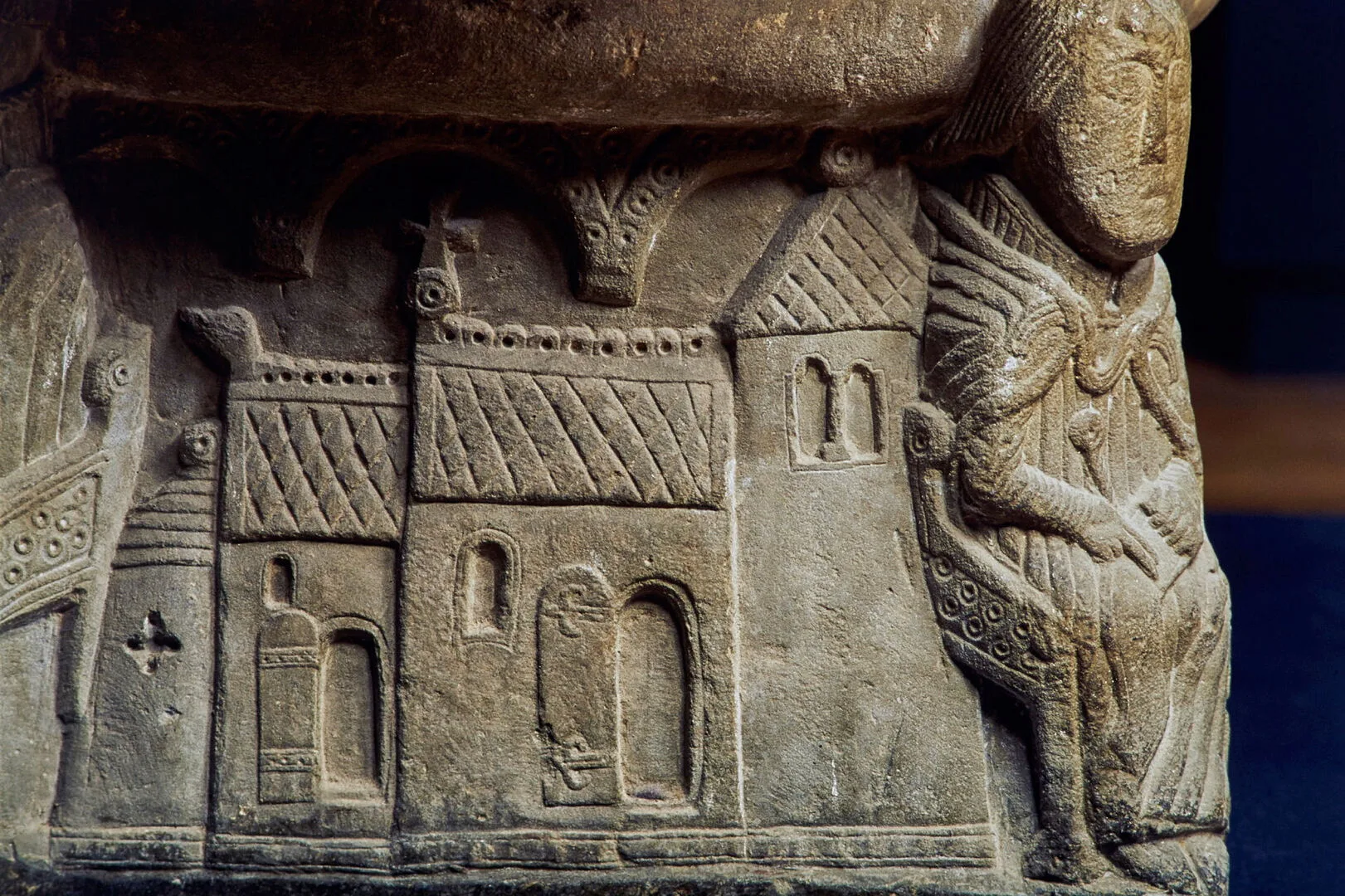
Romanesque church depicted on a baptismal font
From Tingstad church, Östergötland.
On view at Historiska museet in the exhibition Medeltida konst
The two main altars in the nave were arranged similarly. The northern altar was dedicated to the Virgin Mary, while the southern altar was dedicated to a saint, usually the church’s patron. Near the entrance, the baptismal font was placed so that unbaptized children, considered impure, were not brought further into the church than necessary.
At the Swedish History Museum there is a reconstructed model of a medieval church called Landskyrkan, which gives visitors a sense of what a medieval church might have looked like.

When a church was consecrated, the bishop marked twelve crosses on the walls with holy oil to symbolize the twelve apostles. These so-called consecration crosses were often later painted over and are still preserved in many churches. Walls were also decorated with murals, which told biblical stories for an illiterate population.

Medieval church art
No other country has preserved such a rich and extensive collection of church objects from this period as Sweden. Through countless wars, wooden sculptures and altarpieces have been lost in many parts of Europe. Sweden, however, has been spared from wars within its own borders, and the objects have remained untouched in the churches. During the Swedish Reformation, the art objects were allowed to remain in the churches, unlike in other European countries where images of saints and decorations were removed.
Church paintings
Sweden has a unique treasure in the old churches’ frescoes. The reason so much of this treasure has survived is the Lutheran Reformation and its positive attitude toward images in the church interior. This was not always the case on the continent. Sweden has also been spared from devastating wars.
In the 15th century, many churches were equipped with vaulted ceilings made of brick. The brick walls were plastered, and then mural paintings were created. This provided new opportunities to tell stories through images on walls and ceilings.

In many Swedish medieval churches, there are preserved paintings. Most of these churches are made of stone, and the paintings are executed on lime plaster, which is why they are called frescoes. Wooden churches also had paintings. Church paintings are dated from the early 12th century up to the 16th century.
Södra Råda Old Church in Värmland was a timber church from the 14th century that burned down on a windy autumn night, November 12, 2001. What made the church unique was that its interior was completely covered with paintings, the oldest dating back to 1323. The paintings that had made the church famous throughout Europe were lost, and the grief was great.


